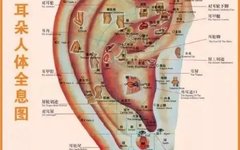1. Sore Throat — He Gu (LI4)
He Gu (合谷) is located at the junction of the thumb and index finger when they are spread at a 45-degree angle.
Applying pressure to He Gu is very effective for relieving sore throats. This point can also be used for toothaches, hypertension, and facial acne.
2. Insomnia Relief — Rubbing Yong Quan (KD1)
Yong Quan (涌泉) is located on the sole of the foot. Rubbing the feet can stimulate both Yong Quan points effectively. Repeating this action thirty-six times will help stabilize emotions and promote sleep.
3. Spontaneous Sweating and Night Sweats — Yin Gu (KD10), Shen Shu (BL23)
Sweating is governed by the Kidney and Bladder meridians. Therefore, Yin Gu (阴谷) on the inner side of the knee and Shen Shu (肾俞) located 2 cm to the left and right of the second lumbar vertebra are very effective for hyperhidrosis.
4. Low Blood Pressure — Bai Hui (DU20)
When feeling heavy-headed or dizzy, applying firm pressure to Bai Hui (百会) at the top center of the head can help. Place the middle fingers on this point, exhale slowly, and press firmly for 6 seconds, repeating this 5 times to improve blood circulation.
5. Rheumatic Pain — Nei Guan (PC6), Wai Guan (SJ5), Bai Li (SP21)
For upper body pain, applying pressure to Wai Guan (外关) and Nei Guan (内关) is most effective. Wai Guan is located three finger widths above the wrist crease, while Nei Guan is on the opposite side.
For lower body pain, Bai Li (百里) is the most effective point. When applying pressure to these points, alternate sides while exhaling and pressing for 6 seconds, repeating 10 times. If there is swelling or inflammation, avoid pressing directly on the affected area and instead apply gentle pressure nearby.
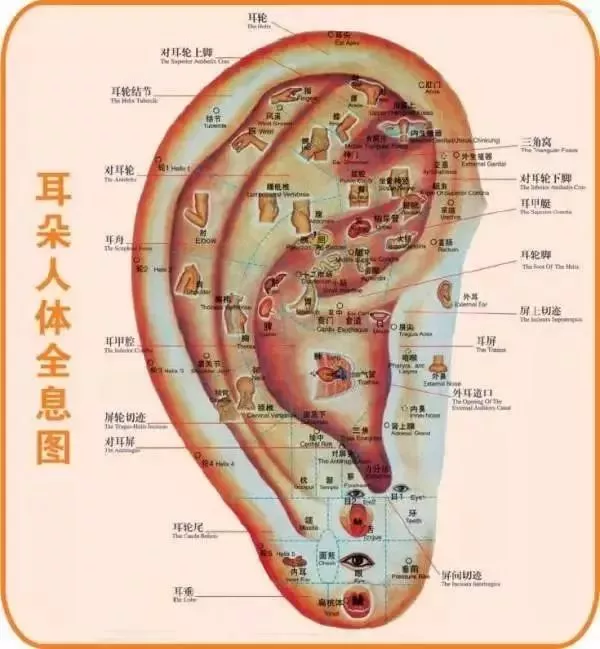
6. Cold and Fever — Da Zhui (DU14)
Stand upright and lean the neck forward to find a prominent bone at the base of the neck. The closest bone above is the 7th cervical vertebra, and the depression between this and the first thoracic vertebra is the Da Zhui (大椎) point. Firmly pressing this point can help reduce fever and alleviate cold symptoms.
7. Hypertension — Hypertension Point
On the base of the big toe, there is a thick horizontal line. The center of this line is known as the Hypertension Point. Slowly exhale and apply firm pressure with both thumbs for 6 seconds. Repeat this on both feet 3 times. Doing this daily for a year can significantly lower high blood pressure.
8. Menopause — Xue Hai (SP10)
Located about three finger widths above the inner corner of the kneecap, pressing on the painful area is known as Xue Hai (血海). Exhale slowly and apply pressure with the thumb for 6 seconds, repeating 10 times. Consistent practice will alleviate bothersome menopausal symptoms.
9. Hangover Relief — Rubbing the Dorsum of the Foot
The Tai Chong (LV3) point on the dorsum of the foot is excellent for hangovers. Stand and alternate pressing the midsection of one foot against the other. This can be done for three minutes the morning after a hangover to relieve headaches.
10. Sore Throat — Chi Ze (LU5), Shang Chi Ze (LU6)
For sore throats, apply pressure to both Chi Ze (尺泽) and Shang Chi Ze (上尺泽). Raise the arm and locate the thick tendon in the center of the inner arm; Chi Ze is located just outside this tendon. Pressing 3-4 cm above Chi Ze will locate Shang Chi Ze.
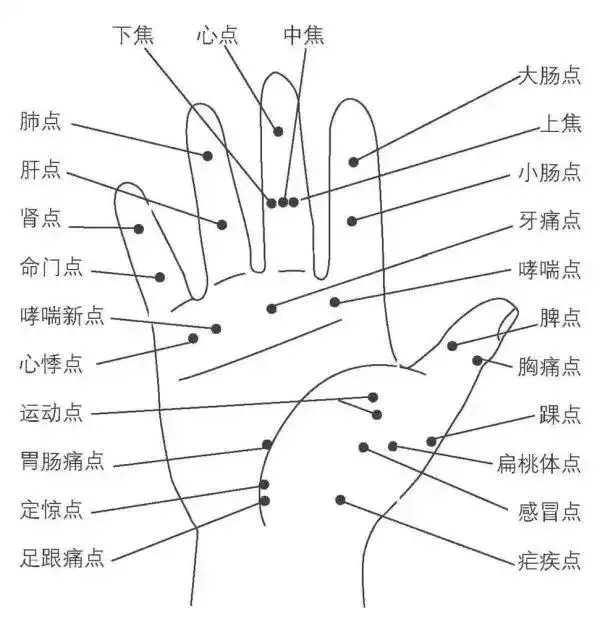
11. Pseudomyopia and Eye Fatigue — Around the Eyes, Xing Jian (LV2)
Pseudomyopia and eye strain are caused by eye fatigue. Here are some acupressure methods to relieve eye fatigue.
① Lightly press around the eyes — Close the eyes and gently press the eyelids until a slight pain is felt. Use the index and middle fingers to press the eye sockets.
② Ke Zhu Ren (GB1) — Located in the central bony depression on the side of the face where glasses rest, pressing this point can relieve eye fatigue. While pressing, exhale slightly and apply pressure for 6 seconds, repeating 10 times.
③ Xing Jian (行间) — Located between the big toe and second toe, this point is related to the eyes and liver. Apply pressure while exhaling until a slight pain is felt, repeating 2-3 times. This point is particularly effective for eye fatigue caused by lack of exercise or overeating.
12. Shoulder Muscle Stiffness and Pain — Tian Zhu (BL10), Jian Jing (GB21)
Three points can relieve shoulder stiffness and pain: Tian Zhu (天柱) located 2 cm to the left and right of the neck, Jian Jing (肩井), and the inner side of the scapula. While applying pressure to these points, exhale slowly and rub for 6 seconds, repeating 10 times to effectively relieve shoulder stiffness and pain.
13. Nasal Congestion, Runny Nose, Sneezing — Ying Xiang (LI20)
Applying pressure to Ying Xiang (迎香) is very effective for relieving runny nose, nasal congestion, and other nasal discomforts. Ying Xiang is located 1 cm to the left and right of the nostrils. Press both sides simultaneously, taking a deep breath, and while exhaling, apply pressure for 6 seconds. Repeat this 10 times to relieve nasal congestion and runny nose. Stimulating this point can also revive the sense of smell and stimulate appetite.
14. Lower Back Pain — Rubbing the Lower Back
The method for rubbing the lower back involves placing the palm on the lower back and vigorously rubbing up and down. This stimulates the meridians and points related to lower back pain, such as Ming Men (DU4), Shen Mai (BL23), and Zhi Shi (BL52), providing relief.
15. Rheumatism and Joint Pain — Rubbing the Knees
Regularly performing knee rubbing can prevent knee aging and rheumatism. Sit on a chair and use both hands to rub the knees in a circular motion, also rubbing the inner side of the knees. This can be done during breaks, and the knees should feel warm for best results.
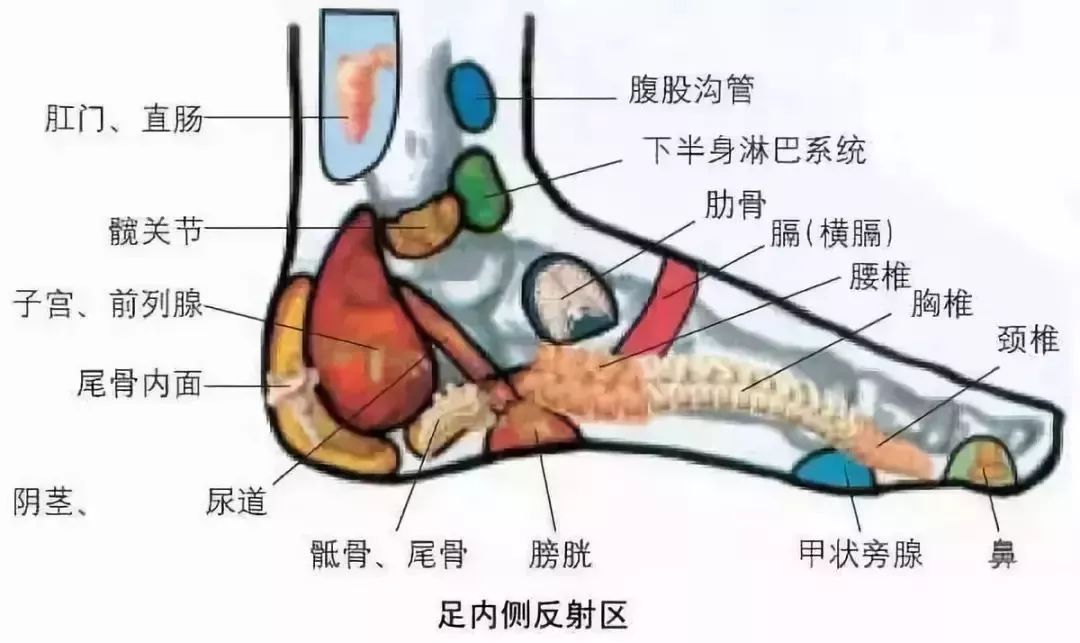
16. Chronic Gastritis and Stomach Pain — Zhong Wan (Ren12)
Zhong Wan (中脘) is an essential point for gastrointestinal issues, located at the center of the line connecting the lower end of the sternum and the navel. While lying down and relaxing the muscles, exhale slowly and apply firm pressure for 6 seconds, repeating 10 times to provide comfort to the stomach.
17. Presbyopia — Gastrointestinal Point
The eyes are governed by the gastrointestinal meridians, so pressing the Gastrointestinal Point can delay aging and prevent eye deterioration. This point is located at the center of the life line on the palm. While exhaling slowly, apply pressure for about 6 seconds, doing 20 repetitions, and 5 times a day.
Pressing the left hand is effective for the right eye, and pressing the right hand is effective for the left eye. Additionally, use the same technique to press the points 2 cm to the left and right of the nape of the neck, which are known as Eye Points and Tian Zhu (BL10).
18. Intercostal Neuralgia — Wai Guan (SJ5), Lin Qi (GB34)
Wai Guan (外关) is located three finger widths above the wrist crease. To find Lin Qi (临泣), rub between the little toe and the fourth toe until you reach the end. While applying pressure to these two points, exhale slowly and press lightly for 6 seconds, repeating 10 times on each side to relieve pain.
19. Measles — Li Nei Ting (ST44)
Li Nei Ting (里内庭) is located about 3 cm below the second toe. While exhaling slowly for 6 seconds, apply firm pressure with the index and middle fingers until pain is felt. Repeat this 30 times.
20. Dizziness and Blurred Vision — Zhong Zhu (PC3)
The point for relieving dizziness is Zhong Zhu (中渚), located 2 cm below the gap between the little finger and ring finger. Apply firm pressure while exhaling, and you will feel a release of tension. This point is effective for dizziness and blurred vision when standing up; remember it well.
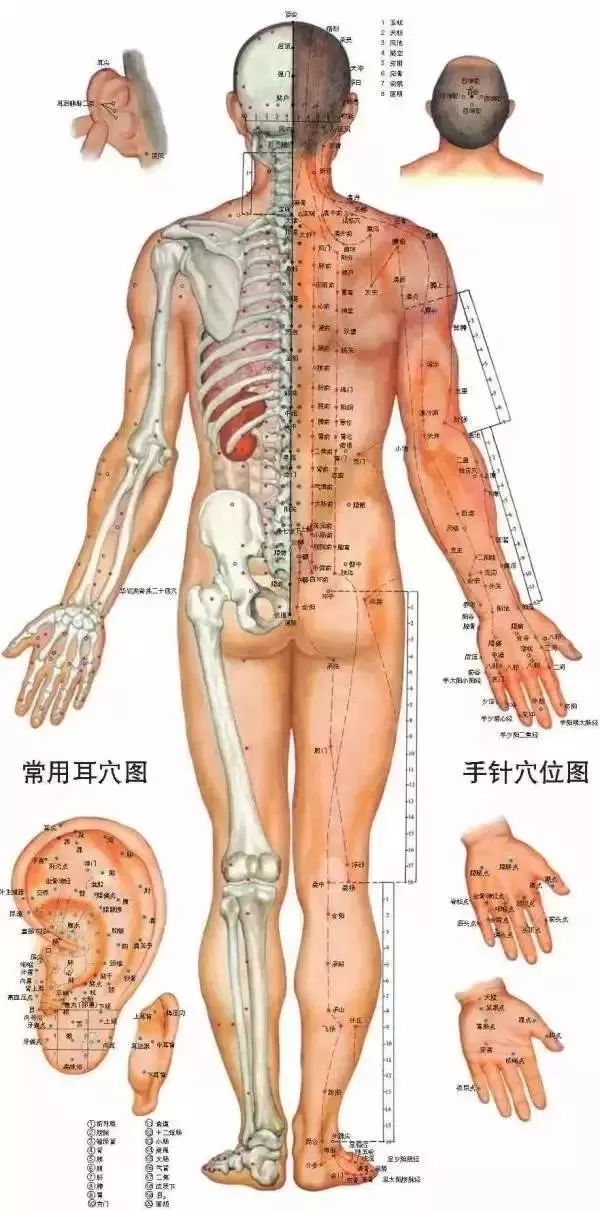
21. Cystitis — Zhong Ji (CV3), Yong Quan (KD1)
To locate Zhong Ji (中极), draw a line from the navel to the pubic bone and divide it into five equal parts; the point at 1/5 from the bottom is Zhong Ji. This point not only enhances energy but also has special effects on the urinary system.
While applying pressure, exhale slowly and press lightly for 6 seconds, repeating 20 times. Next, apply pressure to Yong Quan (涌泉) at the center of the foot, slightly closer to the toes, using the same technique for 10 repetitions.
22. Asthma — Zhi Chuan (DU12)
To prevent asthma, the point known as Zhi Chuan (治喘) is located 2 cm to the left and right of the Da Zhui (大椎) below the 7th cervical vertebra. Exhale slowly while applying firm pressure for 6 seconds, repeating 3 times.
23. Male Premature Ejaculation and Female Abnormal Discharge — Rubbing the Lower Back
Warm up both hands and rub the lower back up and down for 3 minutes each morning and evening until the area feels warm. This method is effective for premature ejaculation and impotence as it stimulates points like Ming Men (DU4), Shen Shu (BL23), and Zhi Shi (BL52), while also addressing female reproductive issues, particularly abnormal discharges.
24. Four Types of Cold Sensitivity — Qi Hai (CV6), Liang Qiu (ST34), Liang Qiu (ST34), Yao Zhi Yang Guan (BL26)
-
For overall coldness, draw a straight line connecting the navel to above the pubic bone, dividing it into ten equal parts; the point at 3/10 from the navel is Qi Hai. Apply pressure 6 times.
-
For coldness in the feet, the point known as Liang Qiu (梁丘) is located at the depression where the muscles bulge when the knee is extended, about three finger widths above the right end of the kneecap. Apply pressure 20 times.
-
For coldness in the shoulders and wrists, the same point Liang Qiu (梁丘) is used, located at the depression at the ankle. Apply pressure 20 times.
-
For coldness in the lower back, the point known as Yao Zhi Yang Guan (腰之阳关) is located in the depression between the fourth and fifth lumbar vertebrae. Apply pressure 10 times.
When applying pressure to these four points, take a deep breath and exhale slowly, pressing every 6 seconds.
25. Morning Sickness — Tian Zhu (BL10), San Yin Jiao (SP6)
To calm vomiting and nausea, apply pressure to Tian Zhu (天柱) and San Yin Jiao (三阴交), also known as “Female San Li”.
Tian Zhu is located 2 cm below the depression at the back of the neck. Use both fists while exhaling, striking firmly every second. Do ten sets, resting briefly between sets.
San Yin Jiao is located on the inner side of the ankle, along the bone, about 6 cm above. Use the same technique to strike, doing three sets, alternating sides.

26. Lumbar Strain and Chronic Back Pain — Shang Xian Dian
Shang Xian Dian (上仙点) is located in the depression directly below the 5th lumbar vertebra. Exhale slowly while applying firm pressure for 6 seconds, repeating 20 times to relieve pain. Another method is to stand straight and bend the knees, applying pressure at the top of the bend.
27. Eczema — Zhi Yang
One of the points for stopping itching and removing eczema is Zhi Yang (治痒). Stimulating this point can relieve itching. Zhi Yang is located at the intersection of a vertical line drawn from the shoulder depression and the horizontal line of the nipple. Exhale slowly while applying pressure for 6 seconds, repeating 10 times to stop itching.
28. Stomach Pain and Abdominal Pain — Rubbing the Abdomen
The method is simple: use the palm to rub the abdomen in a circular motion, starting with the right hand on the right side of the chest, moving counterclockwise from the upper abdomen to the lower abdomen, then back to the starting position with the left hand. Alternate hands for a total of thirty-six times.
This abdominal massage can relieve fatigue in the digestive organs and strengthen them. Continuing this practice will improve gastrointestinal health and prevent stomach and abdominal pain.
29. Wrist Muscle Pain — Jian Jing (GB21), Hand San Li (LI10)
To relieve muscle pain, applying pressure to Jian Jing (肩井) and Hand San Li (手三里) is most effective. Jian Jing is located at the junction of the nipple and shoulder line. While applying pressure, exhale slowly and use the thumb and index finger to pinch both shoulders until a slight pain is felt for 6 seconds, repeating 10 times. Next, apply pressure to Hand San Li using the same technique, alternating hands for 10 repetitions to relieve muscle pain in the hands.
30. Cervical Pain and Numbness — Tian Zhu (BL10), Da Zhui (DU14)
At the depression just below the occipital bone, there is a prominent muscle; the outer depression of this muscle is Tian Zhu (天柱). For any abnormalities above the neck, Tian Zhu is essential.
While applying pressure, exhale slowly and press for 6 seconds, repeating 20 times. Next, apply pressure between the 7th cervical vertebra and the 1st thoracic vertebra at Da Zhui (大椎). Press while nodding forward, repeating 10 times.
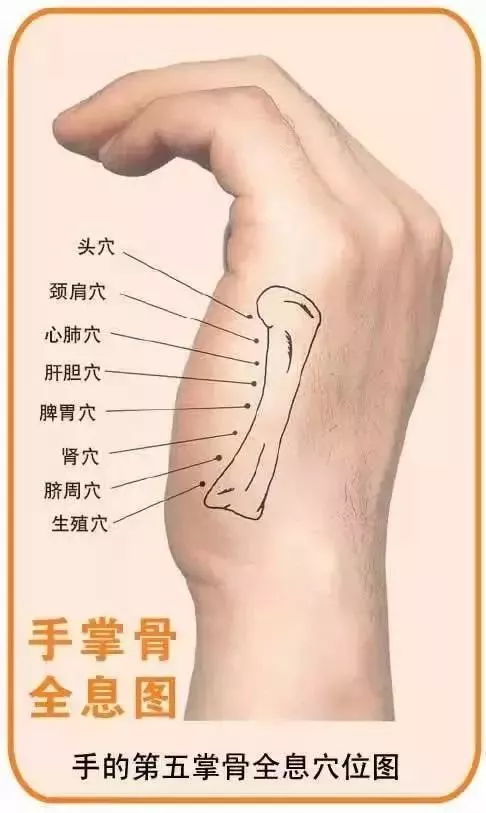
31. Knee Joint Pain — Xi Yan (ST35)
Joint pain is not limited to the knees; sometimes the ankles, wrists, and arms can also feel pain. Applying pressure to Xi Yan (膝眼) is very effective for joint pain. This point is located in the depression below the knee when it is bent at a right angle. Use the middle fingers to apply pressure while exhaling for 6 seconds, repeating 10 times on each side, doing this 3 times a day.
32. Diarrhea — Diarrhea Point, Tian Shu (ST25)
To relieve diarrhea, one point is located 2 cm inward between the big toe and the second toe. While exhaling slowly, apply firm pressure with the thumb for 6 seconds, repeating 15 times on each foot.
The second point is Tian Shu (天枢), located three finger widths to the left and right of the navel. While relaxing the muscles, take a deep breath, exhale slowly, and apply light pressure for 6 seconds, only releasing the pressure when the breath is fully exhaled. Repeat this 10 times.
33. Menstrual Pain — San Yin Jiao (SP6), Nei Guan (PC6)
Here are two points that are very effective for menstrual pain.
One is San Yin Jiao (三阴交), an essential point for female conditions, located on the inner side of the ankle, pressing up four fingers to the most painful area. Exhale slowly and apply firm pressure every 6 seconds, repeating 20 times.
Next, apply pressure to Nei Guan (内关), located on the inner side of the wrist, about three finger widths above the wrist crease. Exhale slowly and apply pressure for 2 seconds, repeating 5 times on both sides. This will alleviate menstrual pain.
34. Sciatica — Pressing Pain Points
The points for sciatica are located along the midline of the back of both legs. However, the midline refers to the areas where pain is felt. Pressing these painful areas from top to bottom while exhaling and applying firm pressure for 6 seconds, repeating 15 times on each leg.
35. Headache — Tai Yang (GB8)
When a headache occurs, immediately press the thumbs on both Tai Yang (太阳) points, applying pressure while rotating for a total of thirty-six times. Remember to slightly lift the thumbs after each press and breathe before continuing.
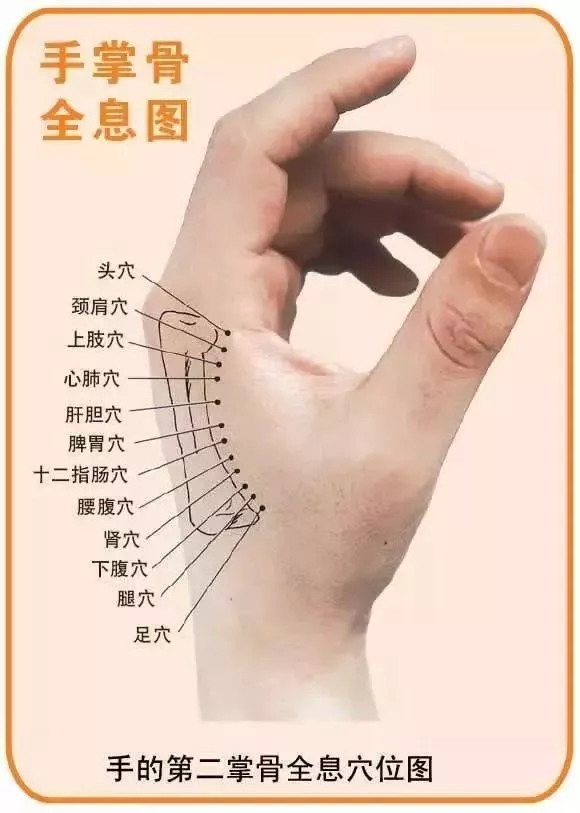
36. Shoulder Periarthritis — Jian Jing (GB21)
There are several points on the shoulder, among which rubbing Jian Jing (肩井) is most effective for shoulder soreness, pain, and periarthritis.
37. Constipation and Strengthening the Stomach — Rubbing the Arms
The arms are filled with many meridians and points that can exercise the internal organs, especially those related to the stomach and intestines.
When someone experiences constipation, vigorously rubbing the arms can relieve hemorrhoids and asthma, and improve physical condition and restore energy.
38. Toothache and Headache Relief — Pressing He Gu (LI4)
When the palms are brought together, a slight bulge appears between the thumb and index finger, which is the He Gu (合谷) point. He Gu is effective for headaches and toothaches, serving as a special pain relief point.
When experiencing toothaches or headaches, simply massage the He Gu point to alleviate pain. Use the right hand to vigorously massage the He Gu point on the left hand, then switch hands to massage the right hand’s He Gu point, and the intense pain will naturally ease.
39. Promoting Hormone Secretion — Rubbing the Inner Thighs
This method is particularly recommended for couples experiencing low libido. This technique can promote the secretion of endocrine hormones in both men and women, though the methods differ slightly.
For Women — Place both hands on the inner thighs and rub diagonally thirty-six times, then rub the lower abdomen left and right thirty-six times. Ensure the rubbing is directed towards the inner thighs for best results.
For Men — While rubbing, one hand should hold the penis to one side, and the other hand should rub similarly, moving from the bottom to the top of the inner thighs thirty-six times, then switch hands and repeat, followed by rubbing the lower abdomen thirty-six times.
40. Stopping Vomiting — Rubbing the Epigastrium
The acupoints that can suppress nausea are located from the epigastrium to the abdomen, including the upper, middle, and lower epigastric points.
When feeling unwell, such as during motion sickness or after drinking, use the fingertips to vigorously rub the epigastrium for about two to three minutes, and the nausea will naturally stop, relieving stomach pain or discomfort. This method is simple and can be performed anytime; it is best to remember it well.
Disclaimer: The content of this article is for reference only and should not be used indiscriminately. The article and images are sourced from the internet; if there is any infringement, please contact for removal.
Share this with those who care.
The more people see it, the more health there will be!
Today's Recommendations

